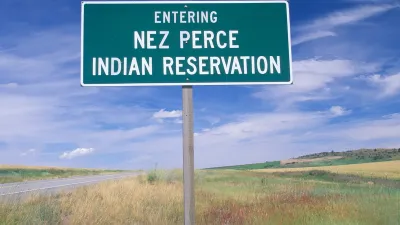Like music, environmentalism's tenets evolved from precedent, and Kaid Benfield hopes they are evolving still.
"Can placemaking – in short, the building or strengthening of physical community fabric to create great human habitat – be a 'new environmentalism'? The question is posed by a provocative short essay, which I first discovered in 2011. Written by Ethan Kent of the Project for Public Spaces, the article continues to make the rounds. The essay influenced my own writing (“The importance of place to sustainability”), and I’m returning to it here because the issues Ethan has raised continue to be important."
"My answer, by the way, is a qualified yes: creating the right kinds of places for people, particularly at the neighborhood scale, has indeed become a new approach to environmentalism and one to which I am deeply committed. But I qualify my answer because placemaking is by no means the only important aspect of today’s environmentalism (not that Ethan suggested that). In addition, I think the physical building of community can become even stronger as an environmental tool by becoming somewhat more explicitly environmental in its content. I’ll get into all that in a minute.
"First, though, I want to explore the phrase 'new environmentalism' a bit. Years ago, the well-known urbanist Andres Duany was kind enough to write a cover blurb for NRDC’s then-new book about smart growth, Solving Sprawl. Andres wrote, 'Finally, here is a book on the environment that includes the human habitat as part of nature. This may be the first text of a ‘New Environmentalism’.' I was quite honored by the flattery that our book was being considered important and new, and by the parallel language to 'new urbanism,' bestowed by one of that movement’s pillars. Might our way of thinking – advocacy for smart, green 'people habitat,' if you will – be earning its way to an impact on the environmental movement as significant as that brought by the new urbanists to architecture and planning?"
FULL STORY: Is placemaking a “new environmentalism”?

Study: Maui’s Plan to Convert Vacation Rentals to Long-Term Housing Could Cause Nearly $1 Billion Economic Loss
The plan would reduce visitor accommodation by 25,% resulting in 1,900 jobs lost.

Placekeeping: Setting a New Precedent for City Planners
How a preservation-based approach to redevelopment and urban design can prevent displacement and honor legacy communities.

Using Old Oil and Gas Wells for Green Energy Storage
Penn State researchers have found that repurposing abandoned oil and gas wells for geothermal-assisted compressed-air energy storage can boost efficiency, reduce environmental risks, and support clean energy and job transitions.

Washington State Plans Ambitious ‘Cycle Highway’ Network
The state is directing funding to close gaps in its existing bike network and make long-distance trips more accessible.

Homeowners Blame PG&E for Delays in ADU Permits
The utility says it has dramatically reduced its backlog, but applicants say they still face months-long delays for approvals for new electrical work.

Rethinking Wildfire Defense: How a Landscape Approach Can Protect Neighborhoods
Post-fire analysis of the Eaton Fire reveals that a landscape approach — including fire-resistant vegetation, home hardening, and strategic planning — can help reduce wildfire risk, challenging assumptions that trees and plants are primary fire hazards.
Urban Design for Planners 1: Software Tools
This six-course series explores essential urban design concepts using open source software and equips planners with the tools they need to participate fully in the urban design process.
Planning for Universal Design
Learn the tools for implementing Universal Design in planning regulations.
Borough of Carlisle
Caltrans
Heyer Gruel & Associates PA
Institute for Housing and Urban Development Studies (IHS)
City of Grandview
Harvard GSD Executive Education
Salt Lake City
NYU Wagner Graduate School of Public Service
City of Cambridge, Maryland



























